Bees and Butterflies Love Verbena bonariensis
Bees and butterflies love Verbena bonariensis, and so do I! It’s also known as ‘purple top’, 'South American vervain', 'tall verbena' or ‘Argentinian vervain’.
I actually find it to be very versatile in a garden, including small ones like mine (as I will explain) and it provides food for bees and butterflies from summer through to the autumn.
Bees and butterflies don’t mind sharing the dainty, tubular, nectar-filled clumps of flower heads, and it’s not unusual to see many butterflies and bees on a flower cluster at once.
Verbena bonariensis (purple top) attracts bees and butterflies
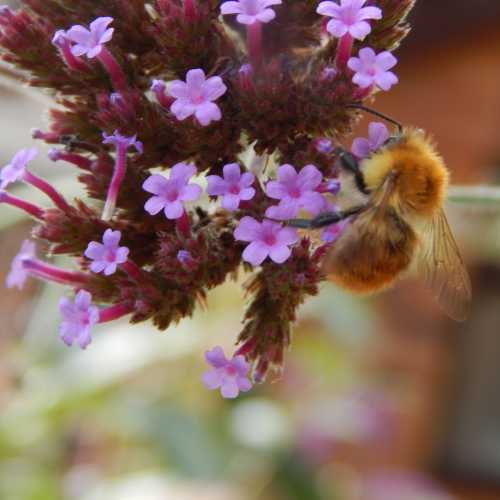 Common carder bumble bee - Bombus pascuorum foraging on Verbena bonariensis.
Common carder bumble bee - Bombus pascuorum foraging on Verbena bonariensis.Apart from attracting bees and butterflies, another great thing about Verbena bonariensis is that it’s easy to grow, and relatively free of diseases.
I first experimented with Verbena bonariensis several years ago. I sowed seeds into pots and kept them under cover in a temporary polythene ‘greenhouse’.
Back then, we didn’t have a greenhouse made from glass, but my method worked a treat, and I soon had young plants to transfer to the front garden.
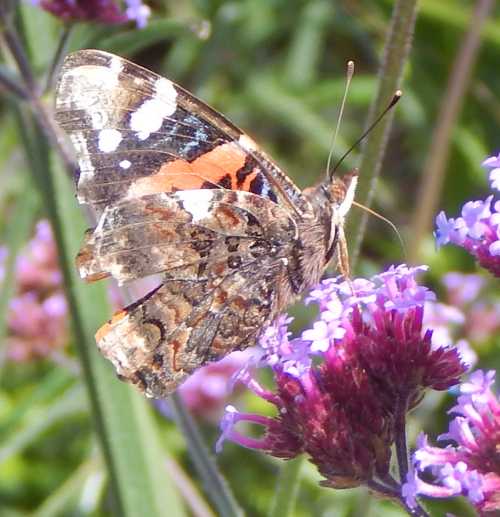 Red admiral butterfly - Vanessa atalanta on Verbena bonariensis.
Red admiral butterfly - Vanessa atalanta on Verbena bonariensis.Our garden is small, but the few tall, very slender stems don’t look out of place.
In fact, the Verbena adds an appealing ‘softness’ to the border.
The flowers attract bumble bees, honey bees, and a variety of butterflies: peacock, small tortoiseshell, comma, white, and red admiral.
How to grow
Verbena bonariensis
If you’d like to attract bees and butterflies to your garden, you can follow my method, by simply sowing a few seeds in compost in the autumn. Place them in a greenhouse or propagator. Plant them out the following year into a sunny position.
Maintenance
Verbena bonariensis can look straggly. The stems can be cut back in the early spring.
An especially harsh snowfall can also damage plants (as I found out - that same year, a fabulous lavender was also ruined), so you may need to cultivate new plants - unless they self-seed. Fortunately, this was my experience, so I had a few new plant to compensate for the ones I lost.
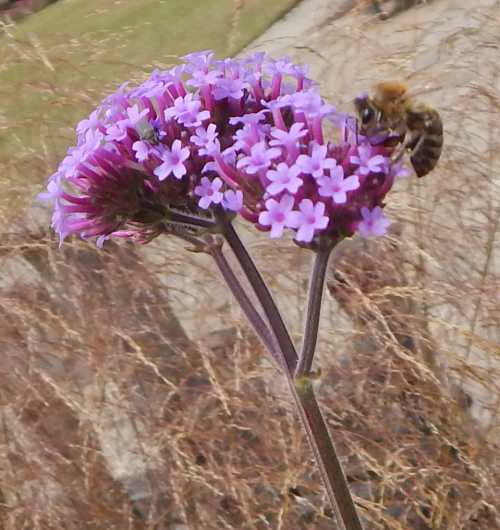 Honey bees- Apis mellifera also visit Verbena bonariensis.
Honey bees- Apis mellifera also visit Verbena bonariensis.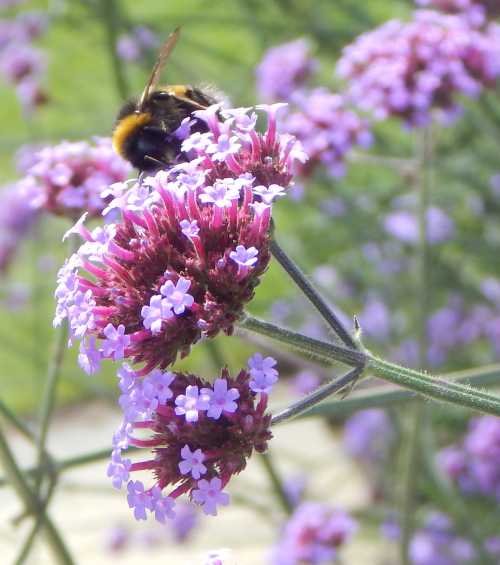 Verbena bonariensis attracts buff-tailed bumble bees - Bombus terrestris .
Verbena bonariensis attracts buff-tailed bumble bees - Bombus terrestris .Here are more images of beautiful butterflies feeding on purple top in my garden - you may attract some, all or even more species:
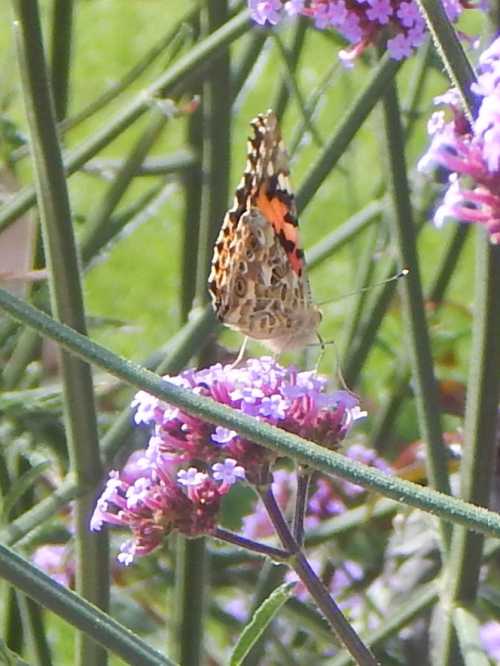 Painted lady butterfly - Vanessa cardui feeding on Verbena bonariensis.
Painted lady butterfly - Vanessa cardui feeding on Verbena bonariensis.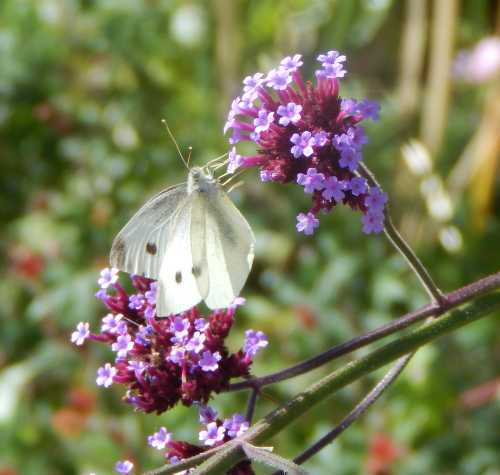 Small white butterfly - Pieris rapae.
Small white butterfly - Pieris rapae.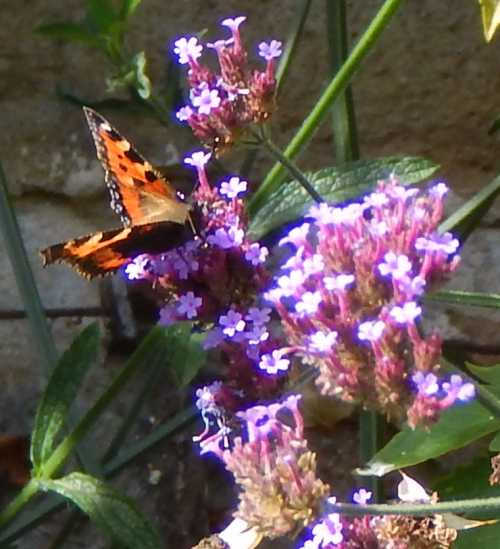 Small tortoiseshell butterfly - Aglais urticae.
Small tortoiseshell butterfly - Aglais urticae.
Where
to site Verbena bonariensis
Verbena
bonariensis looks wonderful in a flower border, especially among other cottage
garden flowers. You can grow it toward
the back, or plant it in a large swathe at the front of the border.
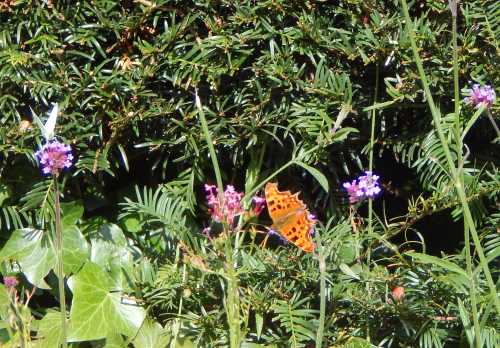 Comma butterfly (right) - Polygonia c-album (white butterfly species on the left).
Comma butterfly (right) - Polygonia c-album (white butterfly species on the left).
Verbena
bonariensis would also look great in a wild, informal garden, and yet it could
also make a design statement if incorporated within a more structured, formal
layout.
I saw a
wonderful border full of grasses that had been designed with butterflies in
mind. Verbena bonariensis had been added,
and of course, bees were attracted too. The
splashes of purple were welcome among the greens and browns, and didn’t look
out of place.
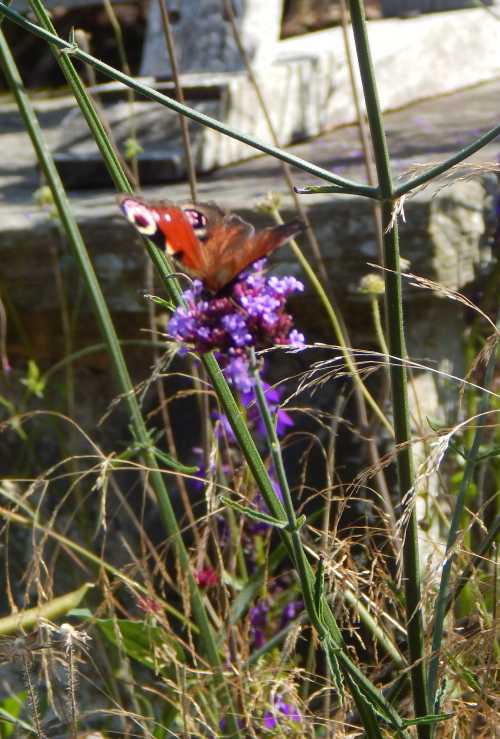 Peacock butterfly - Aglais io.
Peacock butterfly - Aglais io.
If you have
a wall or wish to add softness or feeling of ‘airiness’ to the flower border, again,
this is a great plant to consider. It can also provide beautiful contrast against bulky or
heavy structures.
Add in the butterflies and bees, and you’re sure to have an attractive display in your garden!
More plants for bees....
- Everyone Knows Bees Like Sunflowers
Bees Like Sunflowers - and so do birds. Note how the wonderful flowers heads of these childhood favourites follow the path of the sun during the daytime. - Plant Echinacea (Coneflower) For Bees
Echinacea (Coneflower) is a fabulous perennial loved by bees and butterflies. They provide food for bees when many bumble bee colonies are at their peak. - Prairie Mallow Sidalcea Is A Magnet For Bees
Prairie Mallow Sidalcea ‘Elsie Heugh’ Is A Magnet For Bees, the flowers offering nectar and pollen
If you found this page helpful or interesting, I'd really be grateful if you would share it with others - if not this page, perhaps another, such as Gardening For Bees.
Thank you so much :) .

